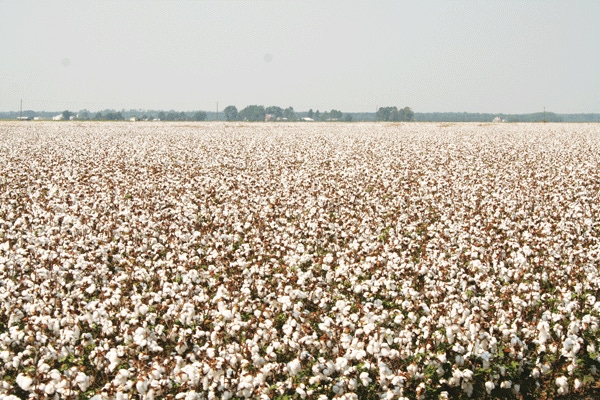January 19, 2011

Early season insect problems, disease and wind damage are among a plethora of good reasons to wait until May to plant cotton in eastern North Carolina.
On the other hand, long-time Beaufort County, N.C., Extension Farm Agent Gaylon Ambrose says there are plenty of reasons to plant early.
Cotton was a popular crop in the Black Lands region of eastern North Carolina back in the 1960s. Weed problems, excessive growth patterns of then new cotton varieties and the lure of other crops took cotton out of the equation for nearly 30 years.
In 1991, one grower (Milton Prince) tried cotton and by 1995, a handful of Beaufort County farmers were back in the cotton business. They built a gin in 1996 and were on their way to becoming one of the top cotton producing counties in the state.
Cotton in Beaufort County and Gaylon Ambrose grew together in popularity. Ambrose carefully tracked the growth of cotton, developing a few theories about growing cotton that didn’t exactly mesh with the experts.
“On the one hand, our growers had a steep learning curve when they first started growing cotton. On the other hand, they didn’t have any biases about how to grow it. As their county agent, I had a steep learning curve, too,” Ambrose recalls.
As part of his steep learning curve, Ambrose closely tracked cotton research in Mississippi. Over five years these researchers planted cotton early (April 1) versus late-April and early-May. Four years out of five they got better yields on early planted plots, and on the fifth year there was no difference in yield.
Sunlight energy a limiting factor
“One of the limiting factors of cotton growth is sunlight energy. When cotton is planted in late April to mid-May, the maximum demand by the cotton plant for sunlight energy is around July 4, or later for later planted cotton.
“By planting earlier in April, the cotton plant will need maximum sunlight energy earlier. When is the most sunlight available? That’s got to be on the longest day of the year or June 21, so it seems logical to me that cotton sets more blooms when more sunlight is available and you ultimately pick more cotton,” Ambrose says.
Based on this research, Ambrose started his own planting date study in eastern North Carolina. “We used April 30, May 16 and May 31 as planting dates. From April 30 to May 16, we were losing 11 pounds of lint per acre per day. April 30 compared to May 31, we were losing 22 pounds per acre per day on the later planted cotton,” he says.
He subsequently duplicated the tests on several Beaufort County farms. When cotton was planted April 8 to April 15, the first flower appeared from June 21-23, or the longest days of the year.
In one test, the veteran North Carolina State University Extension agent says cotton was planted on April 3. “It was a day when a wise man would not have planted cotton —t hat’s why we planted it. The forecast was for cool wet weather, and we even got a light snow on that cotton — we wanted to see how cotton would perform under such adverse weather conditions,” Ambrose says.
The number of plants was significantly less (15,000 versus 45,000) for the early- versus later-planted cotton. Despite its early losses, the final yield on those two plots was virtually the same, he adds.
For about a decade the line for yield consistently favored early-planted cotton. “So, I think I’ve got it all figured out on planting date. Then we get record heat and drought, then October flooding in 2010, and for the first time early planted cotton wasn’t as good,” Ambrose says.
“Biological systems aren’t like physical systems. If I drop a coin from my hand, it will fall every time. In biological systems we deal with probabilities. And, based on my history with cotton in eastern North Carolina, I do believe we are more likely, over time, to make more cotton planted early versus normal or late-planting,” he concludes.
“If you have adequate to ample planting conditions in early April, I wouldn’t be afraid to put cotton in the ground. One thing I’ve learned about cotton over the years is that it’s tougher than I thought it would be, he concludes.
About the Author(s)
You May Also Like






